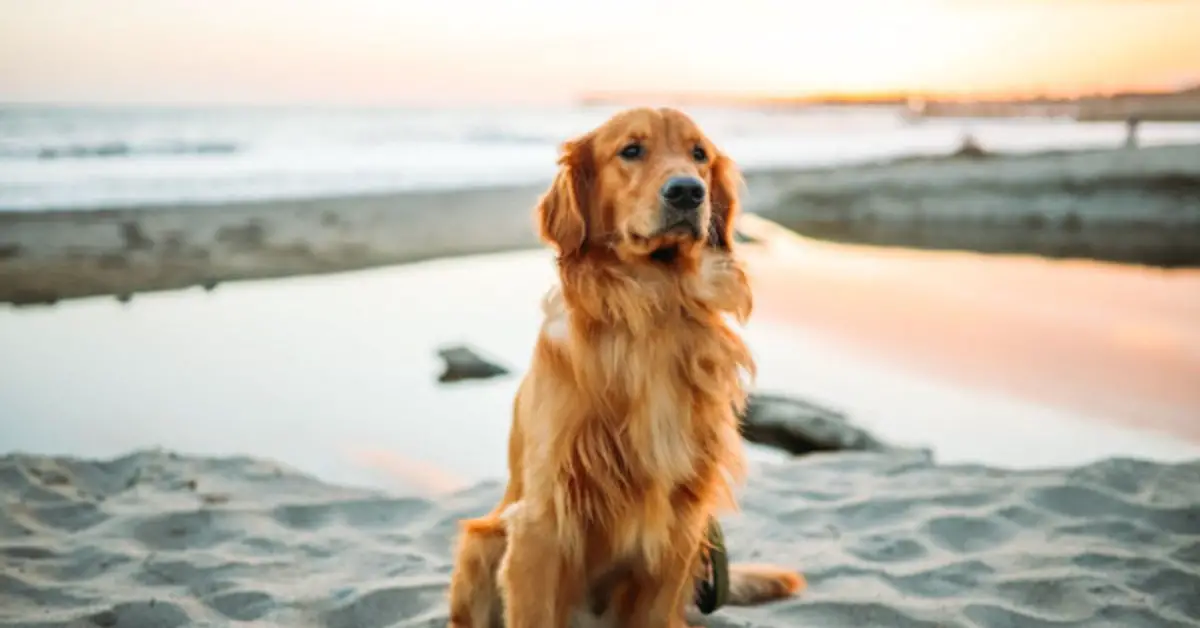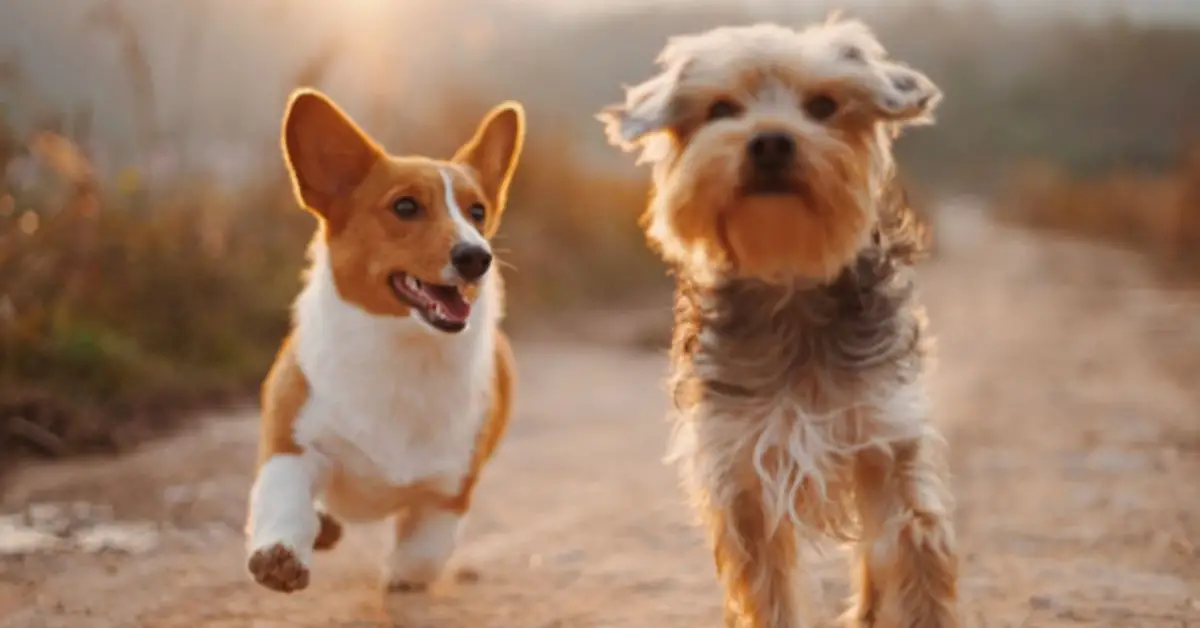
Whether you love taking your dog everywhere, or just don’t have anyone to look after them while you go camping, there are some things you will need to make sure you consider before heading off.
This article covers the four main things you need to consider when preparing to go camping with dogs.
What To Bring For Your Dog When Camping
Here are a few essentials items you will need for a camping trip with your dog:
Food, water, treats
Pack enough to last your dog for the duration of the trip. Store these in lightweight airtight containers or bags to keep them fresh and away from other animals that may be attracted to the smell.
Dog bowls
To save space in your backpack, take collapsible food and water bowls. These are easy to carry and store. You can even let your dog carry it in their doggie backpack if they have one.
Canine first aid kit
Many things can go wrong when hiking through rough terrain or when staying outdoors. Dogs can injure their paw pads. Sharp rocks or branches can scratch them.
So, put a paw pad healing balm in your kit and some insect repellant, along with the usual contents. A canine first aid kit typically includes:
- Your dog’s medical records
- Gauze
- Bandages
- Adhesive tape
- Hydrogen peroxide
- Cotton balls
- Antibiotic spray
- Milk of Magnesia and charcoal (for instances of poisoning)
- Syringes
- Medications
- Digital thermometer
- Scissors
- Tweezers
- Magnifying glass
Updated Identification Tags or GPS beacon
Make sure that your dog has updated identification tags in the event that it gets lost. Check if the information is accurate and legible on the tags.
If your dog has a microchip, check if your information is up to date. A GPS beacon may even be particularly useful for backpackers with dogs who like to wander.
Leash and Collar or Harness
These are a must when camping with your dog. An adjustable hands-free leash is ideal. You can shorten it when there are people, lengthen it and be secure while letting your dog explore.
A collar with a collar light makes it easy to see where your dog is, especially in lowlight conditions.
A Long Line or Rope and a Stake
A long line can be used to tie your dog when at the campsite and prevent it from wandering around but still leave it room to walk around and explore.
Towel
Towels keep your pet dry during rains and after a bath. Pack microfibre towels. They are lightweight, easy to store, and dry.
These can also double their bedding. Just take into account the temperature and your dog’s tolerance for the cold.
Bedding and tent or shade
Dogs need shelter from the elements, too. Consider getting a dog tent if your dog is a large breed and cannot fit inside your tent.
Well-insulated beddings are perfect for cold weather, while lightweight beddings keep your dog comfortable during hot weather. Keeping your dog inside a tent prevents accidents that can happen with other dogs or other animals that may come to your campsite.
Poop bags/ Small shovel
Be considerate of other campers. Dispose of your dog’s waste properly. You can bring poop bags with you. You can also use a small shovel to cover your dog’s poo.
Dog or baby wipes
Your dog can get dirty and smelly on the trail. There may not be a reliable source of water near you. Pack some dog or baby wipes for situations like these.
Dog backpack
Let your dog carry some of their stuff in a dog backpack. Put food, water, treats, collapsible bowls, small towels inside a backpack for your dog to enjoy carrying and helping you out at the same time.
Dog outerwear
Dog outerwear includes coats or jackets, cooling vests, and dog booties. These largely depend on the season and weather of your hike.
However, dog booties are a must, especially on long hikes when there is a possibility of paw injury. Booties keep your dog’s paws safe from wounds or sharp objects.
Dog toys
Your dog gets bored, too. When you stop at your campsite and set up your tent or cook dinner, give your dog toys.
Puzzle toys that dispense food are a great way to make your dog’s brain work, and it’s also a fun way to give their meals.
Paw Cleaner
If your dog will be inside your tent or caravan as well as spending a lot of time outside, you may wish to consider an automatic paw cleaner. These are simple devices that you insert your dog’s paw into for cleaning.
The Ninja Shark Automatic Paw cleaner is a good example of this. They come in three different sizes, to suit your dog, and include a white cylindrical plastic shell, with a silicone cup inside with flexible prongs that rotate around your dog’s paw to clear it.
They can be recharged with a USB cord so you don’t need access to a PowerPoint. Your dog will need to be trained enough to sit still and have you hold their paw and place it in and out of the cleaner, but if this is possible then it is a good option to consider.

Ninja Shark
Automatic Paw Cleaner
- USB Recharge
- Available In Three Sizes
- Removable Silicone Cone For Cleaning
- Gentle On Your Dogs Paws
What To Do With Your Dog While Camping

When camping with your dog, incorporate activities that your dog enjoys like:
- Going on trail hikes
- Kayaking or boating
- Going to the beach
- Playing outdoor games
You can also use this time to train your dog. Teach them new tricks or let them socialize with people or other dogs. Keep your dog in mind as you plan the activities, remember that your dog will be your companion for the duration of the trip.
Where To Go

When bringing your dog on a camping trip, keep in mind that there are camping areas where dogs aren’t allowed. Do your research and confirm with the camping ground management.
Most public lands are dog-friendly, and you can have a lot of space to do activities with your pup. Whether you go hiking or backpacking, use common sense and check with the local laws first.
Make sure you always bring a leash and waste bags as even if you are in the backcountry as there are areas with a high number of sensitive or endangered wildlife.
Weather

The weather plays an important role when you go camping with your dog. Extreme temperatures can be uncomfortable and dangerous for your pets. As responsible dog owners, check the weather forecast before planning a trip with your dog.
Cold weather
Generally, dogs are fine walking in temperatures ranging from 45° F and above. Remember that large breeds have a greater tolerance for the cold than small dogs. As a rule of thumb, pack insulated blankets, dog jackets, and dog booties to protect paws from the cold.
Dogs have higher temperatures than humans, so if you’re feeling cold, chances are your dogs are cold too.
- Be on the lookout for the signs of hypothermia, and always be prepared for the unexpected.
- Cuddle with your dog and share body heat
- Bring extra food as it helps your dog’s body produce more energy.
- Use hot water bottles to warm up their beddings or blankets.
Hot weather
It is not advisable to go camping with your dogs in extremely hot weather as high temperatures can cause heatstroke in your pets.
Again, check the weather forecast and see if the temperature is okay for your dog. To prevent heat stroke or heat exhaustion, remember these:
- Bring cold compresses and cooling vests.
- Groom their coats before the trip, especially if your dog has thick fur. This thins out their undercoat and helps make the heat more bearable.
- Limit your dog’s activity. Don’t let them move around too much.
- Bring a shade or a tarp that you can easily put up and provide your dog with a place to cool down.
- Always stock up on water. Keep your dog hydrated while on the go. This prevents dehydration which can lead to heat exhaustion.
Camping With Dogs – FAQ’s
What is the best dog for camping?
The AKC lists the Siberian Husky as the best dog for camping and hiking enthusiasts. It is a breed full of energy yet gentle and sociable.
What should be in a dog first aid kit?
A canine first aid kit typically includes:
Your dog’s medical records
Gauze
Bandages
Adhesive tape
Hydrogen peroxide
Cotton balls
Antibiotic spray
Milk of Magnesia and charcoal (for instances of poisoning)
Syringes
Medications
Digital thermometer
Scissors
Tweezers
Magnifying glass
Will a dog ruin a tent?
Yes. Your dog can easily ruin a tent with its claws or teeth (if they are teething puppies). Make sure to put a protective barrier and cut your dog’s nails.
Can I take a Labrador retriever cold weather camping?
A Labrador is one of the more popular breeds for cold weather camping. However, it is not suited for extreme cold like Huskies. Make sure you bring a dog jacket and an extra blanket for your dog.
Do you bring a separate tent for your dog when you go camping?
You can bring a separate tent for your dog. It is up to you and where your dog feels comfortable. Letting them sleep inside your tent has several benefits:
No whining and crying.
No chance of them getting out and wandering around.
It’s warmer inside with the dog.
Is camping with a dog safer?
Yes, they can alert you of any danger that can happen.
Can dogs sleep in tents?
Yes, they can.
Can I take my 5-month-old puppy camping?
Yes, it is the best age for puppies to go camping. Make sure that their vaccinations are up to date and their vet has approved the camping trip.
Do dogs get cold camping?
Yes, they can get cold during camping, especially during cold weather.
Does my dog need a sleeping bag for camping?
Yes, especially in cold weather. Sleeping bags provide more insulation and warmth than normal blankets.
How do I help my dog with camping anxiety?
You can help your dog by:
Training them, this helps your dog to focus on you and see you as a safe space.
Don’t leave your dog alone while camping.
Bring medications, weighted blankets, or soothing scents.
Choose a campsite that has privacy.
Give them plenty of exercises.
Be patient with your dog.
How do I take my dog camping for the first time?
When taking your dog camping for the first time, remember these things:
Make sure their vaccines are up to date.
Bring a first aid kit.
Bring more food and water than you think you need.
Think of your dog’s comfort: dog tents, sleeping bags, cooling vests, toys, etc.
Bring a leash and tether.
Check the campsite rules for bringing dogs.
